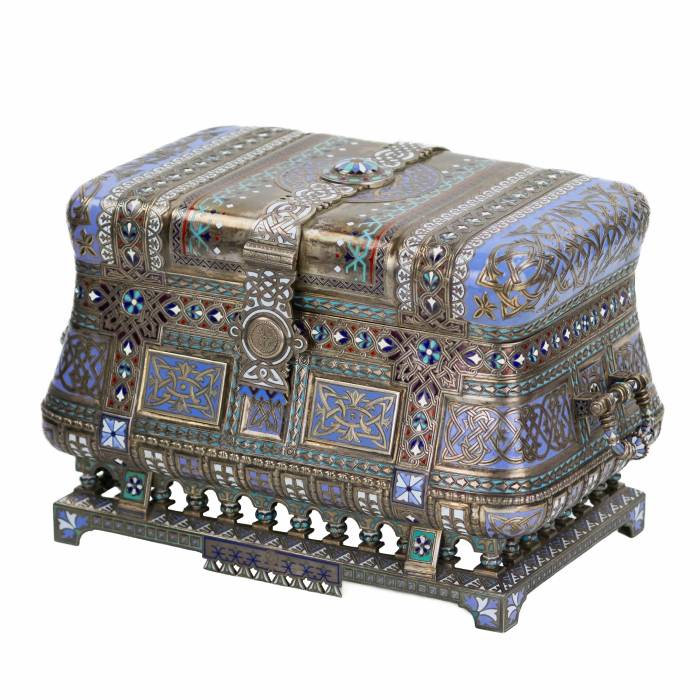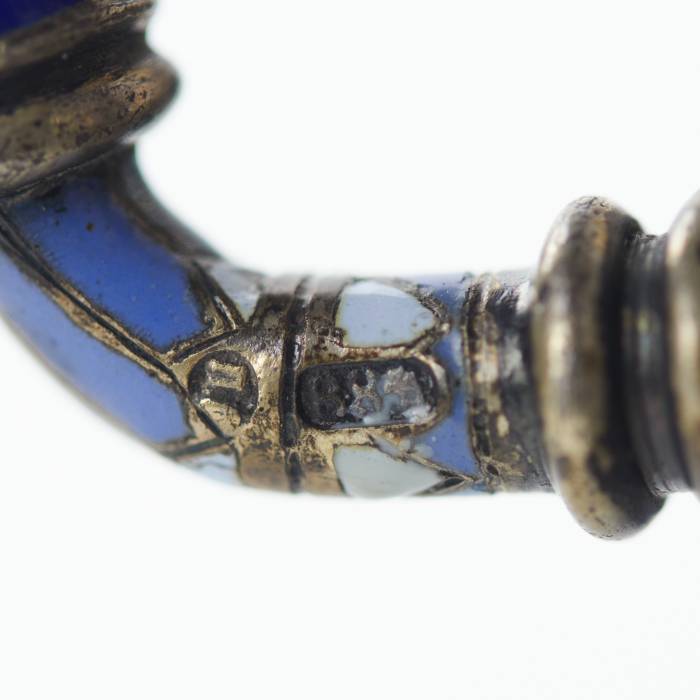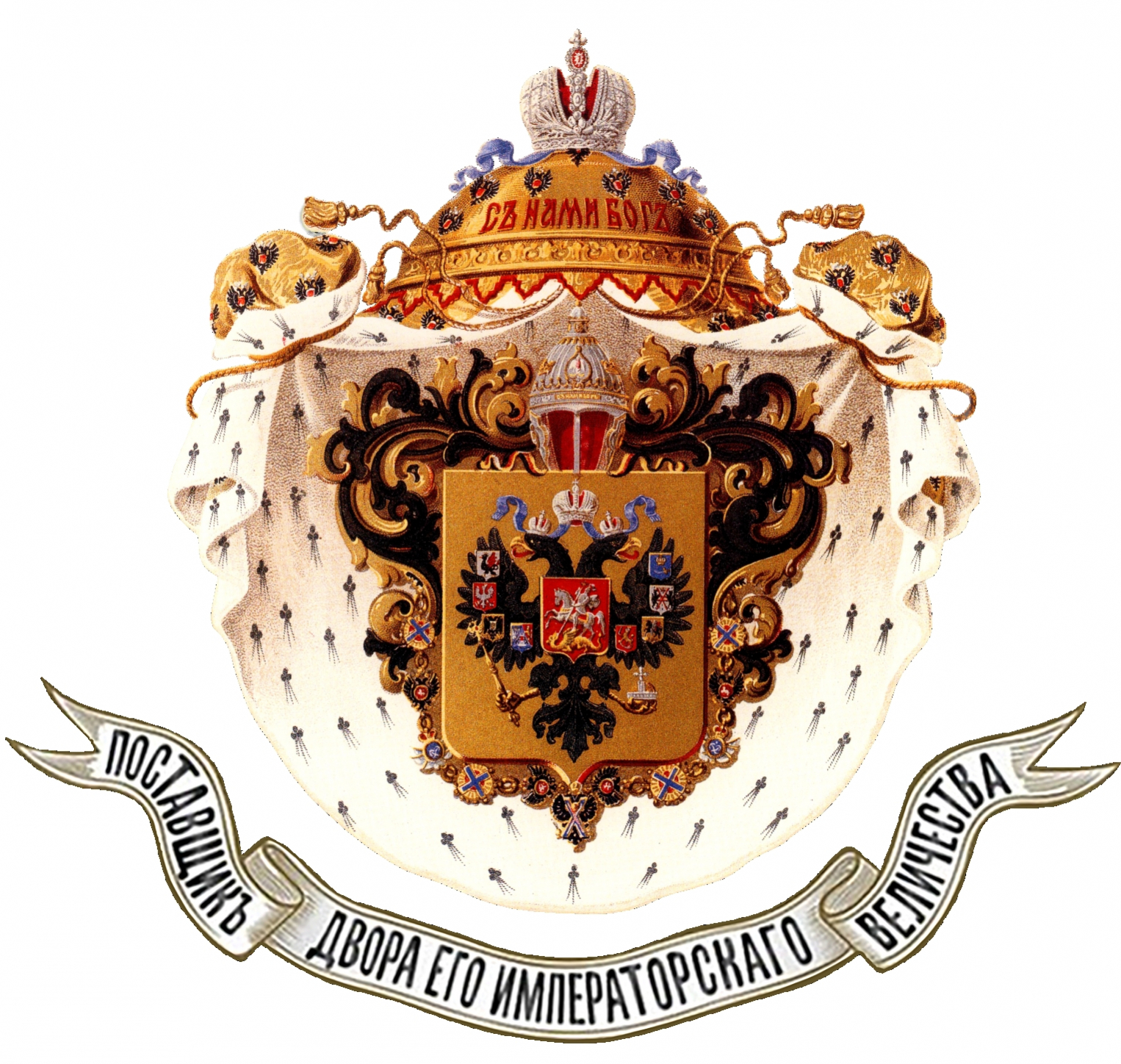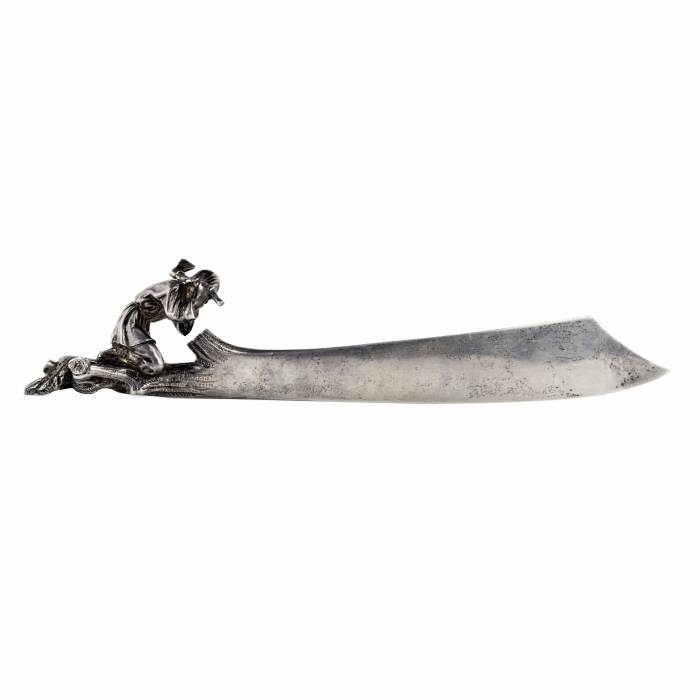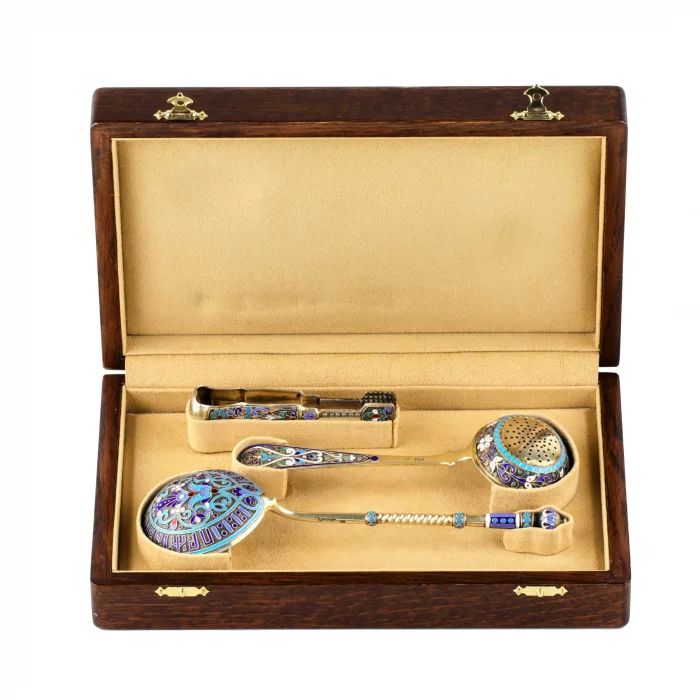Firm P.A.Ovchinnikov (1851 -1917)The firm of Pavel Akimovich Ovchinnikov was one of the largest jewelry companies in Imperial Russia during the second half of the 19th and the early 20th century. Official Purveyor to the Court of His Imperial Majesty. Founded in 1851, the enterprise quickly became a flagship of Russian jewelry art, earning international acclaim for its exceptional gold and silver pieces adorned with enamel, niello, and engraving in the spirit of historicism and neo-Russian style. The Master’s Path: From Apprentice to Factory FounderPavel Akimovich Ovchinnikov was born into the family of a serf owned by Prince Volkonsky. As a boy, he demonstrated remarkable drawing skills and was sent to Moscow to apprentice for eight years in the gold and silversmith workshop of his brother Andrey Akimovich. After gaining his freedom and marrying in 1850, he invested his wife′s dowry of 1,000 rubles into starting his own business. In 1851, he opened a workshop that grew into a full-fledged factory by 1853.By 1854, the company’s annual turnover exceeded 1.5 million rubles. The factory’s output began reaching the Moscow elite and clergy. In 1865, the firm participated in national and international exhibitions, earning prestigious awards—gold and silver medals, the Legion of Honour (Paris, 1867), and the Iron Cross (Vienna, 1873). Purveyor to the Imperial Court In 1865, the firm was officially recognized as a purveyor to the Imperial Court, a title reaffirmed in 1881 and 1896. In 1873, a branch was opened in St. Petersburg, and in 1878, the company began supplying the household of Grand Duke Mikhail Nikolaevich. Ovchinnikov’s products were present in the major palaces of the empire and were exported across Europe and the East. Revolution in Enamel ArtOne of the firm’s greatest contributions was the development of artistic enamel. Ovchinnikov’s craftsmen were the first in Russia to use plique-à-jour enamel—a translucent technique requiring extreme skill. Enamel became not just decorative but a central artistic element. It was often combined with niello, engraving, carving, and gilding. At the 1872 Polytechnic Exhibition in Moscow, Ovchinnikov presented a service decorated with niello medallions depicting Moscow cityscapes and bright enamel ornamentation—a highlight of the event. Oriental Style and the ChinoiserieTrendOvchinnikov was among the first in Moscow to master Eastern stylistics, which became popular in late 19th-century Europe and Russia. In the spirit of chinoiserie, his workshop produced caskets, snuffboxes, and trays adorned with enamel lacquer, precious stones, and exotic motifs. This aesthetic appealed to aristocratic tastes and added to the firm’s international fame.Artistic CollaborationsPavel Akimovich worked closely with many leading artists, architects, and sculptors of his time. These included E. Lanceray, A. Zhukovsky, G. Hartmann, D. Chichagov, I. Monighetti, A. Zakharov, V. Borovsky, S. Komarov, and L. Dahl. Their designs were brought to life in silver, enamel, and gold—each object becoming a masterpiece of applied art. Jewelry School and Master TrainingIn 1875, Ovchinnikov founded a jewelry school for 130 gifted children. The school was awarded a silver medal at the 1882 All-Russian Exhibition and became a major source of talent for Russia’s jewelry industry. It played a crucial role in the development of professional art education. Flourishing and the End of an Era The firm′s peak came in the 1870s–1880s. After Pavel Ovchinnikov’s death in 1888, the business was managed by his sons. They carried on the tradition of enamel painting and showcased their innovative works at the 1900 Paris World′s Fair. The firm operated until 1917, when revolutionary events brought its story to a close. Legacy: Museum Collections Today, works by the firm “P.A. Ovchinnikov” are part of major museum collections around the world:State Hermitage Museum – icons, processional crosses, and enamel reliquaries;State Historical Museum – tea sets, cigarette cases, and objects in the historicist style;Moscow Kremlin Museums – chalices, kovshi, and ecclesiastical items;Museum of Decorative Arts, Moscow – examples of painted and plique-à-jour enamel;Victoria and Albert Museum, London – pieces in the Byzantine style;The Walters Art Museum, USA – enamel vases, bowls, and snuffboxes.
Show more
